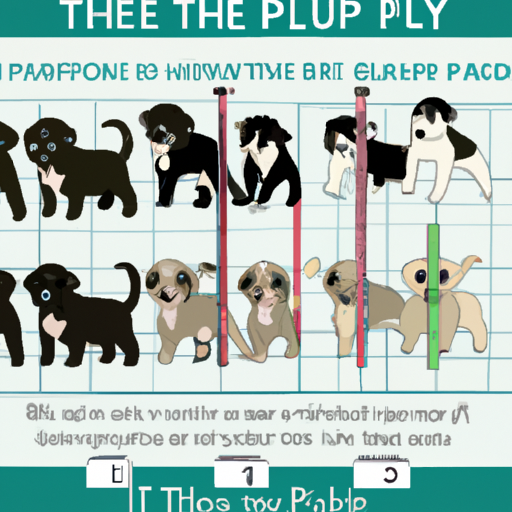As a caregiver, you might be wondering how big your little furball will get. Understanding your puppy’s future size can help you prepare the right environment, diet, and care for them. This guide will provide you with an informative approach to predict your puppy’s adult size.
1. Consider the Breed
The breed is the most significant factor in determining how big your puppy will get. Each breed has a standard size range. You can refer to the table below for a general idea of how big your puppy will get based on their breed.
| Breed Category | Weight Range |
|---|---|
| Toy breeds | Up to 12 pounds |
| Small breeds | 12-25 pounds |
| Medium breeds | 25-50 pounds |
| Large breeds | 50-100 pounds |
| Giant breeds | Over 100 pounds |
Remember, these are general estimates. Individual dogs may vary slightly from the typical size of their breed.
2. Look at the Parents
If you’re able, try to get a look at your puppy’s parents. The size of the puppy’s parents can give you a good indication of how big your puppy will get. Generally, male puppies will be roughly the same size as their father, and female puppies will get close to their mother’s size.
3. Use a Puppy Growth Chart
Puppy growth charts can be incredibly useful in predicting your puppy’s adult size. These charts use your puppy’s breed and current weight to estimate their adult size. Consult your veterinarian to help interpret these charts accurately.
4. Calculate Using the 16-Week Method
The 16-week method is another popular way to estimate a puppy’s adult size. You simply take your puppy’s weight at 16 weeks, double it, and then double it again. This method is most accurate for medium and large breed dogs.
5. Assess Their Paws
Take a look at your puppy’s paws. A puppy with large paws is likely going to grow into a large dog. But don’t rely on this method alone as it’s not always accurate, especially for breeds with naturally larger paws.
6. Check Their Height and Length
Measure your puppy’s height from the top of their shoulder down to the ground and their length from the base of the tail to the tip of the nose. These measurements can provide a rough estimate of their adult size, but like assessing paws, this method is not always accurate.
7. Study Their Growth Plates
Growth plates are soft areas that sit at the ends of the long bones in puppies and young dogs. As the puppy grows, these plates close. X-rays can show the rate at which these plates are closing, which can give your vet an idea of the puppy’s future size.
8. Frequently Asked Questions
Q: Can I determine my mixed breed puppy’s adult size?
A: Mixed breed puppies can be tricky, but using methods like the 16-week method and consultation with a vet can provide some insight.
Q: When do puppies stop growing?
A: Most puppies stop growing between 6 and 18 months, but large and giant breeds may continue growing until 2 years of age.
Q: Can diet influence my puppy’s size?
A: Yes, a balanced diet is crucial for your puppy’s growth. Overfeeding or underfeeding can lead to health issues and affect their development.
Q: Does neutering/spaying affect my puppy’s size?
A: Early spaying/neutering can result in a slightly taller dog, as the growth plates close later than they would in an intact dog.
By taking into account these factors and methods, you can estimate how big your puppy will get and prepare to provide them with the best care possible. Remember, every puppy is unique, and these are just estimates.



